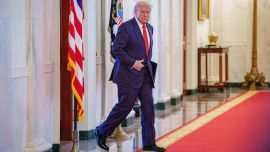What to do with all the lithium? Sell it to the highest bidder? Or maybe ban exports? How about setting up a lithium cartel, to ensure a high price?
These questions are proving thorny for a clutch of Latin American countries that have found themselves sitting on massive deposits of a mineral critical for a carbon-free future.
Chile, Argentina and Bolivia jointly account for 61 percent of the world’s identified lithium resources, essential for the lithium-ion batteries that will power electric vehicles and nix the internal combustion engine. That’s 52 million tons, dissolved in underground lakes of brine in the highlands of the Andes. Mexico, Brazil and Peru have 3.5 million more, according to the US Geological Survey.
The bounty raises again a challenge that Latin America has repeatedly faced, starting back when the wealth came from Peru’s guano and Brazil’s rubber all the way to when it came from Bolivia’s natural gas and Mexico’s oil: how to leverage natural resources into sustained, broad-based prosperity?
Governments in the region still don’t know. On one level, though, they share a dream. It is not to become lithium producers. It is to become exporters of high-tech cars.
The hope is not unjustified. “It’s got to be very frustrating,” said Douglas Irwin, an expert on trade at Dartmouth College. “You don’t want to be the periphery supplying raw materials for industrial development elsewhere.” But given the region’s history of failure, the odds look long.
Latin America's lithium industry is going to be government-heavy. Bolivia, which sits on the world’s biggest lithium deposits, nationalised its supply in 2008 and then demanded state control over its extraction and processing. Mexico nationalised lithium last year and has since announced that only joint ventures with majority state control could exploit the mineral.
In the most consequential move, Chile — the largest lithium producer in the hemisphere, where two private mining concerns produced over 200,000 tons of lithium carbonate last year on land leased from the government in the desert of Atacama — announced in April that it, too, will require the state to control 51 percent of future ventures.
The arrangements are not likely to boost investment. Bolivia’s state lithium company may have cut a deal with a group of Chinese companies to exploit the mineral, but after a decade and a half of botched attempts there is some scepticism about this one. Mexico has not yet nailed down partnerships for its state lithium company. (The government is looking for a way out of a concession it signed with the Chinese company Ganfeng Lithium Co before it nationalised the mineral.)
Meanwhile, production in Chile had already stagnated before the new rules, largely due to its complicated old ones: leases are not only time limited but also impose an annual production cap. Marginal royalties stand at 40 percent for lithium sold at above US$10,000 per tonne. And the two mining companies must reserve a quarter of their output to sell at concessionary prices to firms that commit to use it in value-added projects in Chile.
Only Argentina is drawing real money: US$4 billion plus in investments announced since 2020, mostly from Chinese companies. That’s because Argentina, alone in the region, has been offering concessions with all sorts of government guarantees in exchange for a comparatively meagre three-percent royalty.
The bottom line is how to extract the most value from the windfall. Pulling it out of the ground to sell abroad is not necessarily a bad deal. Last year, when the price hit up to US$88,000 a ton, SQM generated more government revenue than Codelco, Chile’s national copper champion. Exports of the stuff amounted to 2.5 percent of Chile’s gross domestic product. Some analysts see them growing 12-fold by 2040.
Commodity prices go down too, though, as Latin America knows all too well. Lithium prices have plunged about 70 percent since November, as demand for electric vehicles slowed. (Mexico’s President Andrés Manuel López Obrador already suggested that Latin American countries set up a lithium cartel, a la OPEC, to manage its price in the export market. Bolivia’s President Luis Arce is in.)
Nobody has yet hit the nail on the head. Argentina’s President Alberto Fernández could have been speaking for the entire region when he went on Chinese TV and pleaded for Chinese businesses to “transform the lithium into batteries and export the batteries and not the raw lithium.”
In Mexico, López Obrador has already argued that lithium mined in Sonora, where much of the deposits lay, must stay there to develop Sonora-made batteries and ultimately made-in-Sonora cars.
Not all the precedents are bad. A few years ago, Indonesia — the largest nickel producer in the world — banned the export of nickel ores in order to develop higher-grade nickel at home, for use in lithium-ion battery cathodes, among other things. Some US$30 billion in Chinese investment piled in. President Joko Widodo floated export bans of tin, copper, and bauxite.
A joint venture between Korea’s Hyundai Motor Co and LG Energy Solution Ltd is due to start producing batteries at Indonesia’s first battery plant in 2024. And Hyundai has started producing an electric SUV in the country. “We don’t just want to build batteries. This is just half of it,” Widodo told Bloomberg in an interview last August. “We want to build electric cars in Indonesia.”
Chile might be about to reap a little bit of success: The Chinese conglomerate BYD will invest US$290 million to make cathode materials there, using 11,244 tons of lithium carbonate it can get at the concessionary price.
The US Inflation Reduction Act offers additional opportunity in the form of tax credits for batteries made in the US from minerals mined and processed at home or in countries with which it has trade agreements, like Mexico and Chile.
Still, there is a distance between this and muscling into an industry dominated by China, which processes 69 percent of the nickel, 75 percent of the cobalt and 44 percent of the lithium that goes into batteries, as well as 70 percent of the batteries themselves.
At the end of the day, South American countries far away from major markets or manufacturing hubs will find it hard to insert themselves into the EV and battery pipeline. If they try too hard, moreover, the effort could backfire.
Dartmouth’s Irwin notes that export bans often have unintended consequences like drawing competitors into the market and allowing other producers to gain market share. They could encourage the hunt for potential substitutes like sodium.
Moreover, other countries might retaliate. The European Union took Indonesia to the World Trade Organization, arguing that its ban of nickel-ore exports was hurting its stainless steel industry. Then it slapped punitive tariffs on Indonesia’s exports of stainless steel.
Moreover, Mexico, Argentina, Bolivia and Chile are unlikely to all become powerhouses in the manufacture and export of electric cars, regardless of the policy. But then again, only one must succeed for lithium to become the stand-out success story in Latin America’s commodity-led path toward development.
* Eduardo Porter is a Bloomberg Opinion columnist covering Latin America, US economic policy and immigration.
related news
by Eduardo Porter*, Bloomberg


























Comments